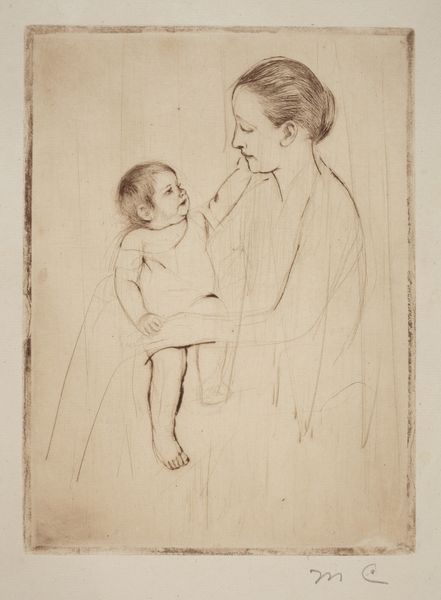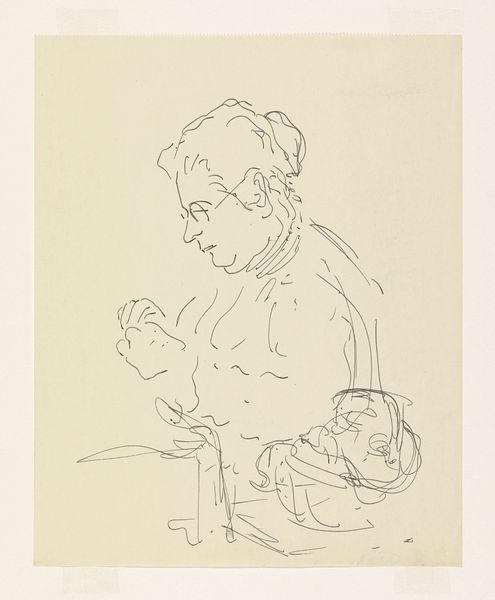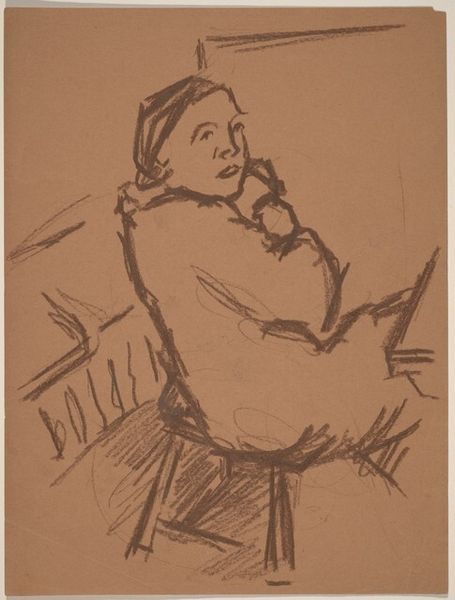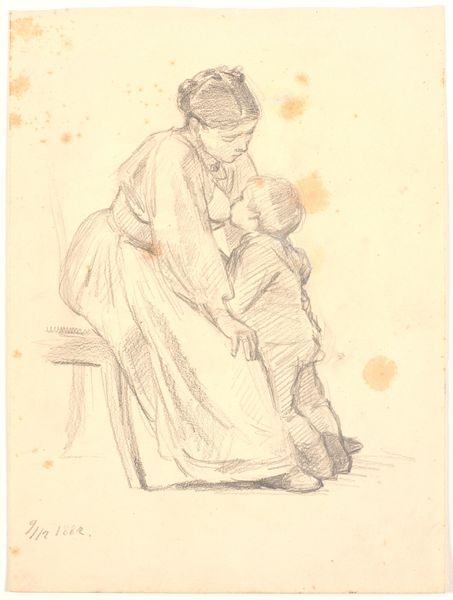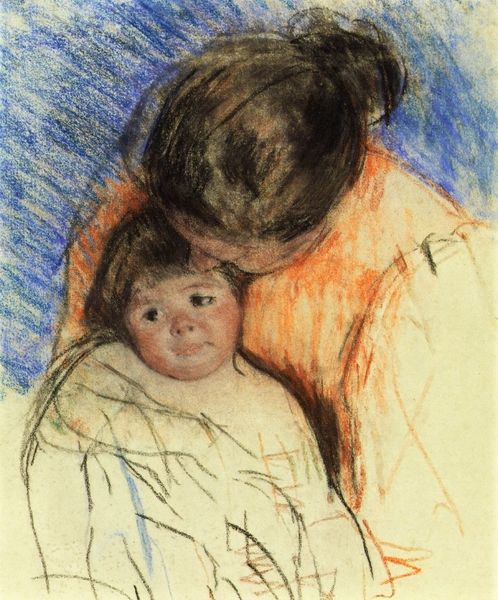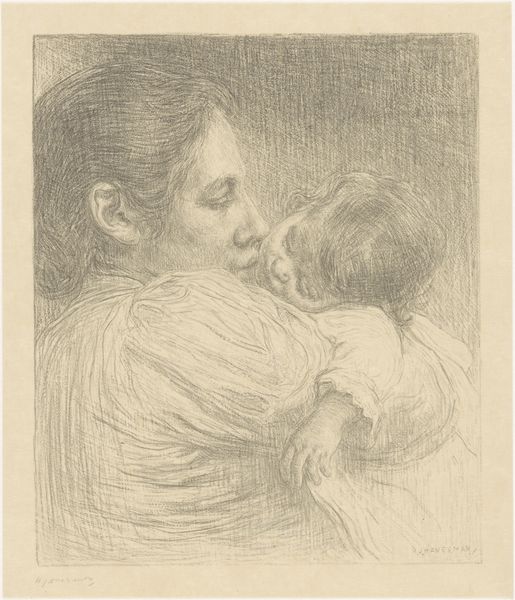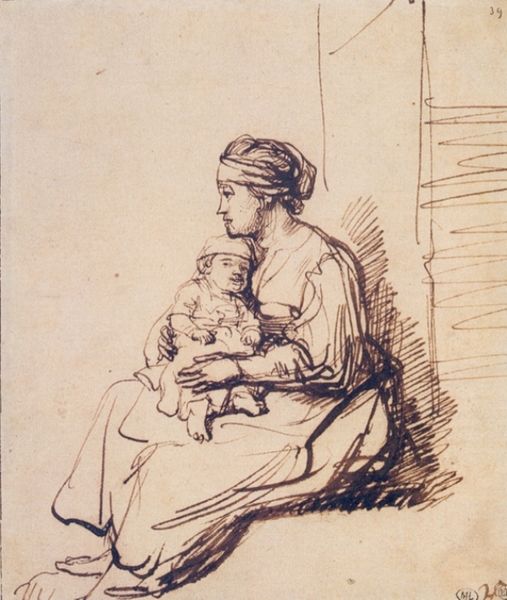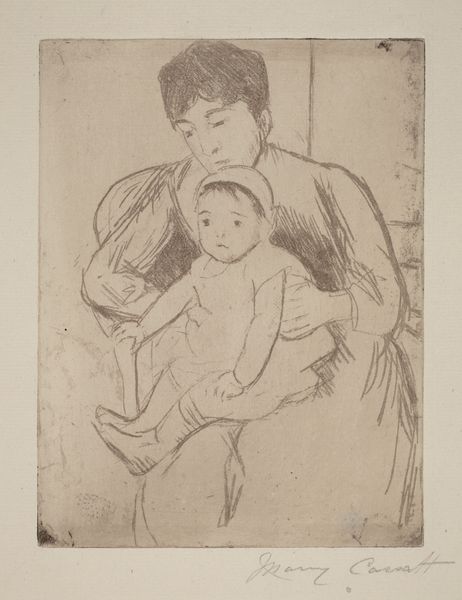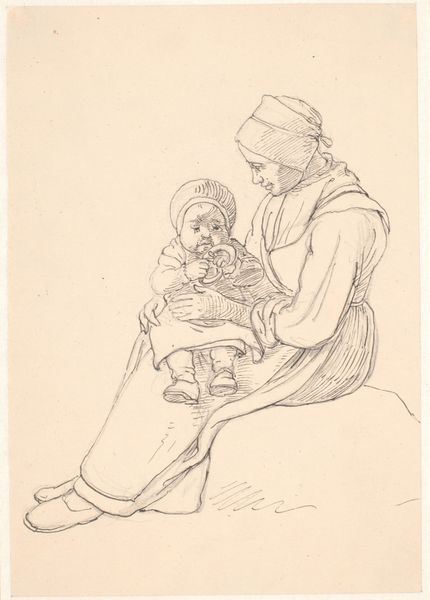
drawing, pencil
#
drawing
#
impressionism
#
pencil drawing
#
pencil
#
portrait drawing
Copyright: Public Domain: Artvee
Editor: Here we have Camille Pissarro's "Mère et enfant" from 1878, a tender sketch rendered in pencil. I'm struck by how intimate and domestic it feels. What aspects of the work stand out to you? Curator: Well, it’s more than just an image of domesticity; it’s a visual document embedded within the sociopolitical context of 19th-century France. Pissarro, often overshadowed, offers us glimpses into the lives of working-class women and their children, diverging from the more idealized representations we often see. Does it invite questions about the role of women and the family in a rapidly changing society? Editor: I hadn’t thought about it in that way. It does seem so ordinary on the surface, just a mother and child. Curator: Exactly. And that "ordinariness" is precisely where its radical potential lies. Consider the Impressionists' broader project of capturing modern life – how might this seemingly simple sketch contribute to a re-evaluation of whose lives are considered worthy of representation and documentation? Does Pissarro challenge the dominant patriarchal narratives? Editor: I see what you mean! It's a subtle but powerful way of acknowledging their existence and experience. Curator: Furthermore, it also intersects with debates on motherhood and female labor during that time. Do you think his choice of portraying this everyday scene, absent of sentimentalism, could be interpreted as a feminist gesture, a quiet rebellion against societal expectations? Editor: Definitely. Looking at it again, the lack of idealization makes it feel incredibly honest. I’ve never thought of Impressionism in such socially conscious terms. Curator: It is important to question not only what we see but also *how* and *why* we see it, in relation to its time and place, and the perspectives it includes, or, indeed, excludes. Editor: This makes me want to explore the social dimensions of other Impressionist works! Thanks!
Comments
No comments
Be the first to comment and join the conversation on the ultimate creative platform.



